When starting an online business, choosing the right website builder is crucial for long-term success. Bubble and Strikingly are two popular options, each with unique strengths and weaknesses.
Bubble is a flexible no-code platform for building complex web apps and Strikingly offers sleek templates for launching stylish sites quickly.
In this in-depth Bubble vs Strikingly comparison, we evaluate key features to help you determine the best choice for your needs. We will analyze market position, ease of use, customization options, features, performance, customer support, pricing, and reviews.
1. Understanding the Basics
Bubble was founded in 2012 by Emmanuel Straschnov, Josh Haas, and Hyam Singer. The founders aimed to create an easy-to-use visual programming platform that allows anyone to build web apps without coding. Within a decade, Bubble has become a major player in the no-code space with over 1 million users worldwide.
Strikingly launched in 2012 by founders David Chen, Ben Tao, and Dafeng Guo. Their goal was to provide simple website-building tools to make launching an online presence fast and easy. Strikingly now powers over 2 million websites globally.
Both platforms have rapidly grown in popularity, though Bubble leads with a bigger user base. However, Strikingly maintains a strong market presence, especially in China.
Bubble Facebook community – 50K+ members
Strikingly Facebook community – 52K likes
The no-code movement has allowed both companies to thrive, but Bubble seems to have an edge as the more fully-featured and flexible option. However, Strikingly’s simplicity makes it ideal for beginners looking for a fast, low-commitment website.
2. Ease of Use
Bubble
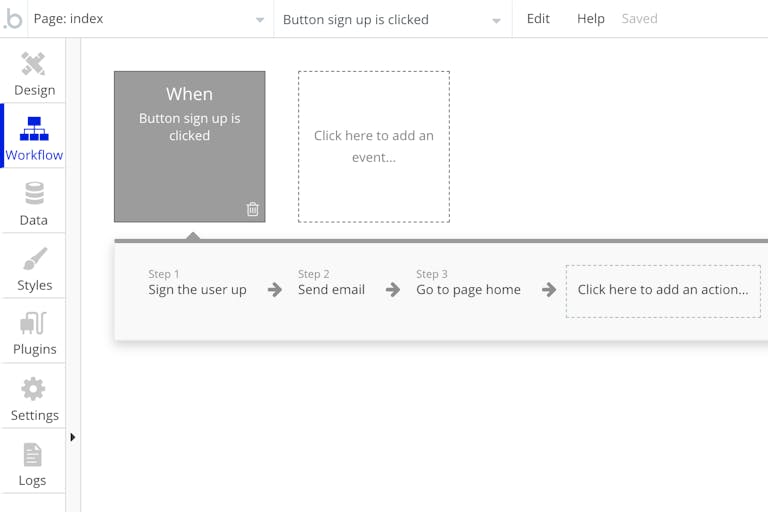
Bubble takes a visual programming approach, allowing users to build web apps by dragging and dropping elements onto pages instead of coding. The editor interface uses a simple workflow of pages, data collections, and plugins. Users can visually connect elements to build complex logic and workflows.
The learning curve is higher than traditional website builders but lower than coding. Those new to Bubble will need to spend time understanding database relationships, events/actions, and other core concepts. However, Bubble offers ample documentation and training resources to guide users.
Overall, Bubble provides a user-friendly no-code interface. However, the extensive possibilities require an investment in learning before achieving proficiency.
Strikingly
Strikingly prioritizes usability and simplicity in their website builder. The editor has an intuitive drag-and-drop interface for quickly adding and styling sections. Pages, blogs, galleries, and stores can be built just by selecting elements and tweaking settings.
The learning curve for Strikingly is very shallow. Beginners can launch a basic website in minutes without tutorials. Most options are configurable through settings rather than manual customization. This makes site building fast and frustration-free.
Strikingly’s content management system (CMS) and streamlined tools simplify website creation. The simplified options trade-off some advanced capabilities for ease of use. There’s no need to write code, and you get excellent usability from the popular web design platform.
Winner: Strikingly
Strikingly is the clear winner when it comes to ease of use. The simplified builder interface allows complete beginners to launch polished websites faster than Bubble. While Bubble provides more advanced features, Strikingly’s focus on usability through constraints creates a much shallower learning curve for new users. For those prioritizing simplicity over flexibility, Strikingly is the way to go.
3. Design and Customization
Bubble
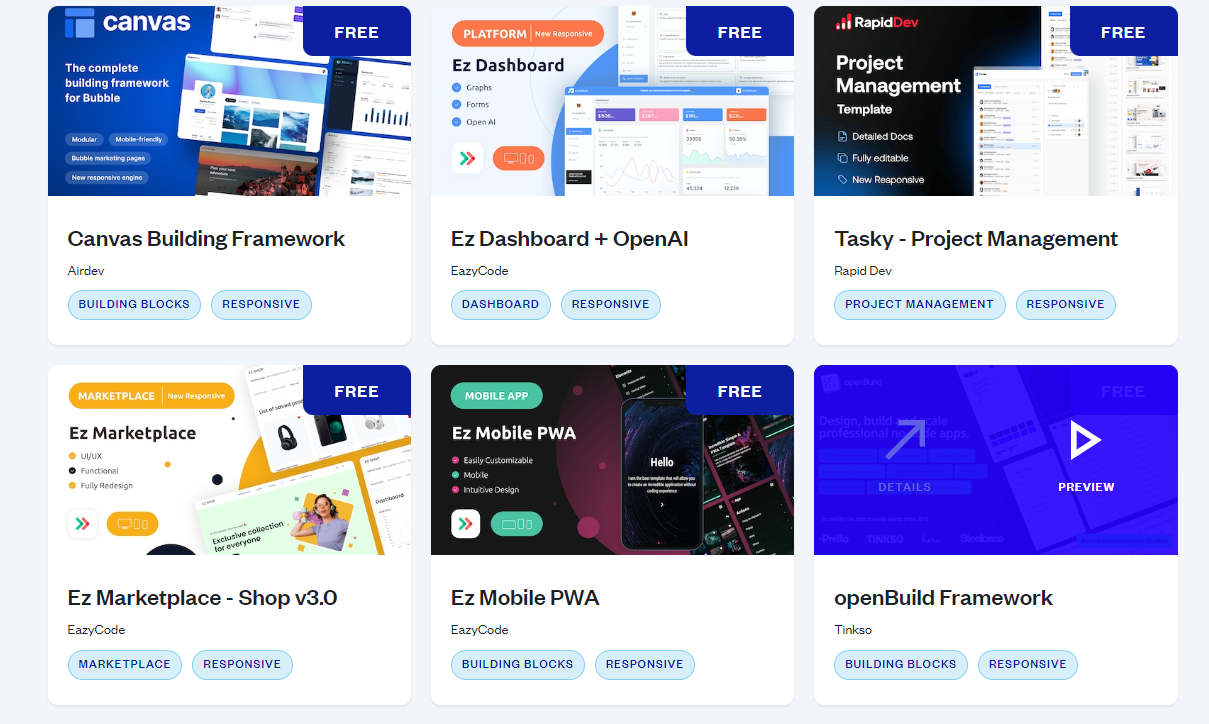
Bubble provides over 100 responsive templates to choose from for web and mobile apps. The templates span categories like services, e-commerce, portfolios, events, and more. Users can fully customize colors, fonts, and layouts, and add custom CSS.
Pages are structured using a flexible editor to add text, media, buttons, forms, and other elements. Advanced users have options to build custom plugins and components for maximum control.
Bubble also includes built-in support for gestures and interactions optimized for touch screens. Apps can be configured for iOS, Android, and progressive web apps out of the box.
The open-ended editor gives Bubble robust and flexible options for design. But reaching design polish requires more manual effort than templated builders.
Strikingly
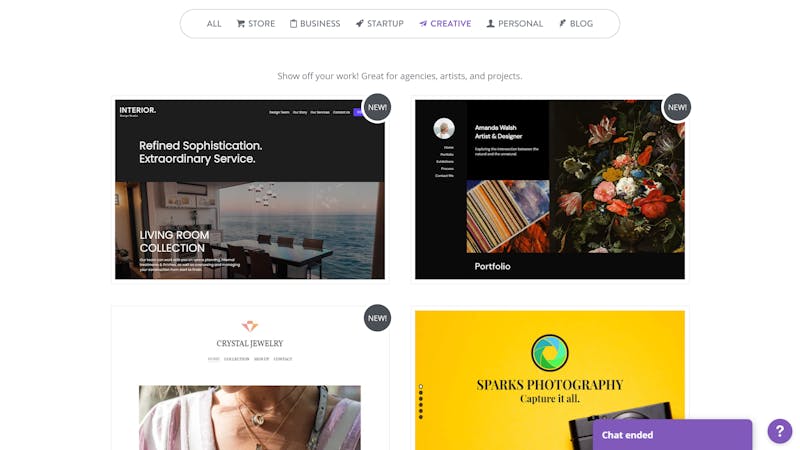
Strikingly offers over 100 modern, mobile-optimized templates focused on portfolios, blogs, stores, and business websites. Users can customize colors, fonts, and layouts, but individual element styling is limited.
The structured page builder and templates make it fast to build a good-looking site. However, Strikingly is more constrained, with fewer options for extensive customization compared to Bubble.
Strikingly sites work well cross-device. However, users have less control over optimizing interactions specifically for mobile experiences.
Overall, Strikingly prioritizes speed and simplicity over design flexibility. The polished templates create cohesive sites with minimal effort.
Winner: Bubble
For design and customization, Bubble comes out ahead. The open-ended editor and ability to modify elements deeply or build custom plugins provide more opportunities for design control. Strikingly’s templated approach is simpler but more limiting.
So for those wanting maximum creative freedom, Bubble is the best choice. But Strikingly’s templates still allow great-looking sites for non-designers.
4. Features and Functionality
Blogging Tools
Bubble
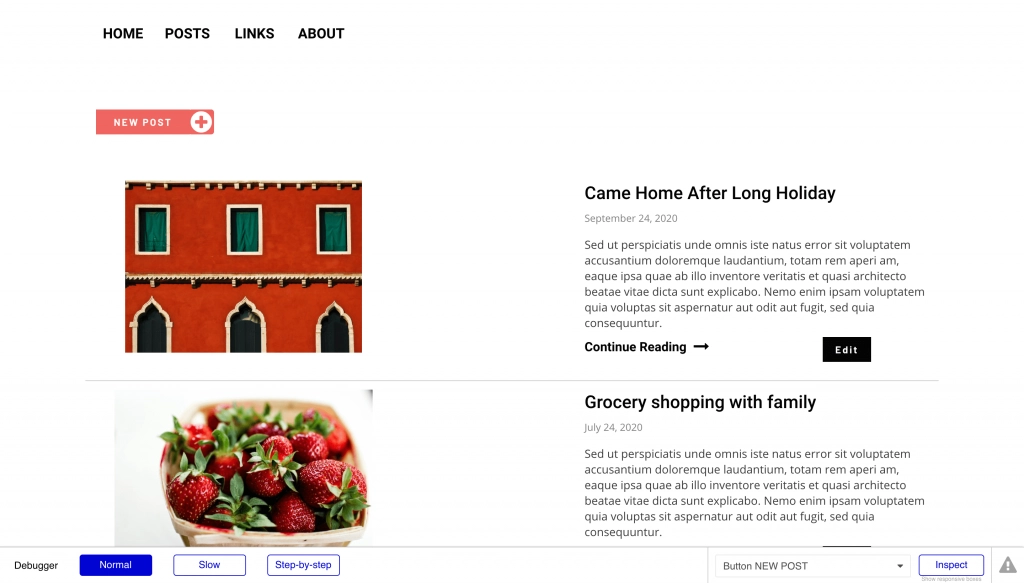
Bubble provides robust blogging functionality through the use of reusable components and database relationships. Users can create content with a rich text editor that includes multimedia, embeds, mentions, and more.
Blog pages can be added through a simple drag-and-drop interface. Posts are stored in a database allowing for dynamic lists, filtering, tags, and custom views such as category archives.
User accounts, roles, comments, and discussions can also be implemented to create community engagement. Forms and workflows automate email subscriptions, notifications, and more.
Overall, Bubble allows highly customizable blogs to be built while still providing guardrails through pre-made components. However, it requires more configuration than dedicated blogging sites.
Strikingly
Strikingly makes adding a blog incredibly simple through built-in tools. Users select the blog page, customize styling, and can immediately begin writing posts with the editor.
Posts are organized by date rather than free-form like Bubble. Options for categories, filtering, and discussions are limited compared to fully dynamic databases.
However, Strikingly blogs cover the basics well. Setting up is fast and intuitive. Standard features like RSS, Disqus comments, and social sharing are built-in.
The streamlined approach makes Strikingly blogs quick to launch but less flexible. It prioritizes ease of use over customization.
Winner: Bubble
For blogging specifically, Bubble takes the win for having more advanced capabilities through its flexible database approach. Strikingly blogs offer an easier entry point but less room to grow.
So for simple blogs, Strikingly provides an incredibly fast way to get started. But Bubble allows much more customization for complex blogging needs, albeit with a steeper learning curve.
E-commerce Capabilities
Bubble

Bubble provides robust e-commerce functionality through its flexible database architecture and plugin ecosystem. Storefronts can be built from scratch or started with templates like directory listings, product pages, shopping carts, etc.
Physical and digital product inventory is stored in a database with details like prices, variants, media, and more. Drag-and-drop interfaces allow configuring shopping workflows from browse to purchase.
Bubble has integrations for payment gateways like Stripe, PayPal, and Square built-in. Shipping, tax, and promo codes can also be configured through plugins.
Overall, Bubble allows full-featured custom ecommerce experiences. However, it requires learning database relationships and more coding logic than turnkey solutions.
Strikingly
Strikingly offers simplified e-commerce capabilities through its built-in store module. Users can add and style store pages, products, categories, and cart/checkout processes within a few clicks.
Product details are entered manually rather than dynamically through a database. Options for advanced features like custom fields, filters, and search are limited.
Strikingly includes Stripe and PayPal integrations for processing transactions. Taxes, shipping, and discounts must be managed manually.
Altogether, Strikingly prioritizes fast setup over advanced stores. The basics are easy to implement but customization is constrained.
Winner: Bubble
For e-commerce, Bubble clearly provides more flexibility and customization potential. The hands-on database approach enables tailored online stores versus Strikingly’s more rigid templates.
So Bubble is the best fit for customizable e-commerce needs. But Strikingly allows anyone to add basic buying capacity quickly and easily.
SEO Tools
Bubble

Bubble provides built-in tools to optimize page titles, meta descriptions, headings, and more for SEO. The flexibility of building with a database makes it easy to implement SEO best practices.
Users have control over URL structure, canonical links, sitemaps, and indexing. Bubble also integrates with Google Analytics for insights on traffic, keywords, and performance.
Additionally, Bubble’s JavaScript-free architecture and server-side rendering improve site speed and indexation – both positive SEO factors.
Overall, Bubble gives more direct control over technical SEO details compared to restrictive templated sites. However, SEO still requires manual implementation.
Strikingly
Strikingly has basic on-page SEO capabilities like customizable titles and meta descriptions. The templated approach also encourages a focused, crawlable site architecture.
However, Strikingly gives less control over URL structure. Dynamic features like blogs have some technical limitations around canonical links.
Strikingly does integrate with Google Analytics. However, insights must be manually optimized since editing the source code is restricted.
Altogether, Strikingly covers SEO basics well but lacks more advanced configuration options. You get what the templates provide.
Winner: Bubble
For SEO, Bubble wins due to the greater control over optimizing pages for search visibility. Strikingly still has SEO capabilities, but Bubble provides more customization potential to help you get ahead in the search engines.
So Bubble is preferable for sites focused on SEO performance. But Strikingly still allows decent optimization for creating responsive websites without the need for visual programming language.
Integrations
Bubble
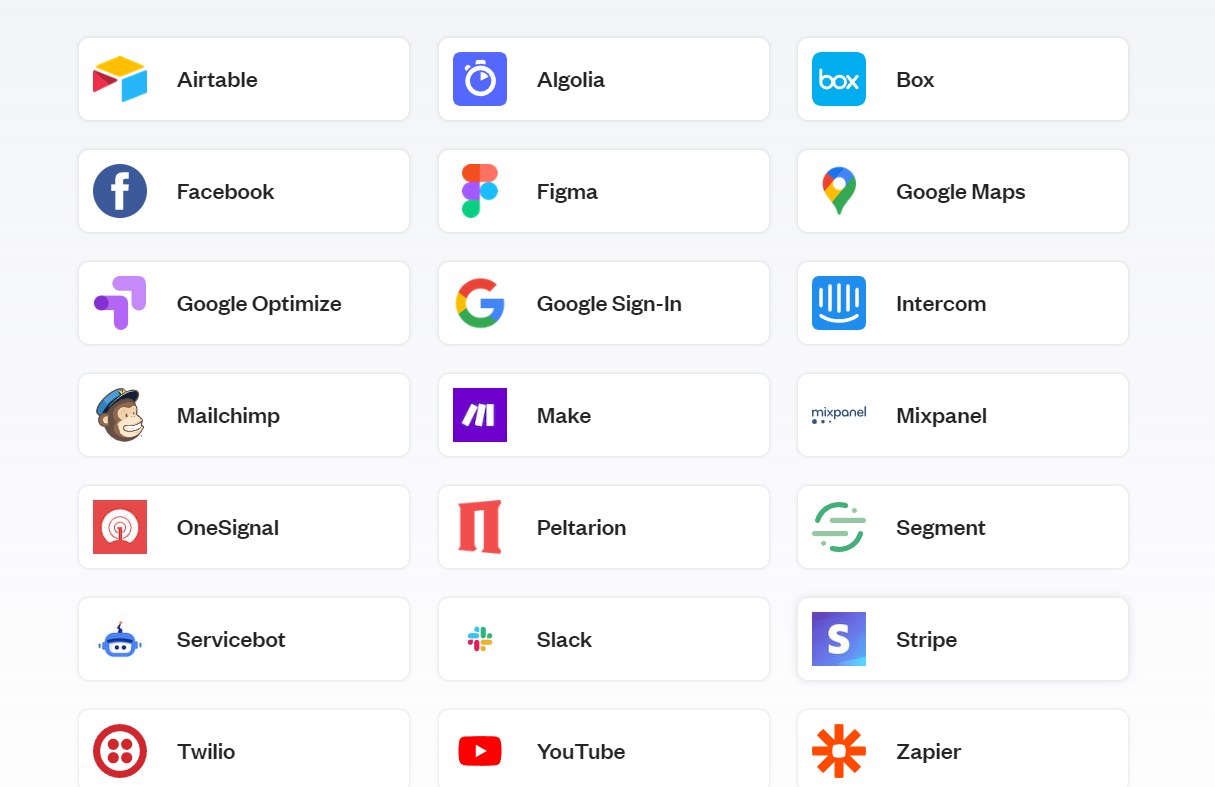
Bubble has an expansive plugin marketplace with over 450 integrations for services like Stripe, MailChimp, Zapier, and more. Plugins exist for everything from databases and analytics to social media and ads.
Users can browse plugins or build their own custom ones. Connecting apps is handled through visual workflows rather than code. API integrations are also available.
This flexibility allows Bubble sites to pull in data and connect to tools for nearly any use case imaginable. The only limit is the availability of a plugin or API option.
Overall, the cloud based platform shines for integrations due to the expansive plugin library and easy visual linking.
Strikingly
Strikingly has native integrations for core services like email marketing, payments, and analytics. Integrations include MailChimp, Constant Contact, Google Analytics, Stripe, and PayPal.
However, Strikingly has a much more limited selection compared to Bubble. There is no plugin marketplace or option for users to build custom connections.
The structured templates and site architecture also constrain how deeply external services can be embedded within Strikingly sites.
Altogether, Strikingly covers integration basics relatively well but lacks flexibility for advanced use cases.
Winner: Bubble
For third-party integrations, Bubble is the undisputed winner due to the breadth of plugins available and the ability to build custom connections.
Strikingly has enough to cover common needs but lacks the extensibility Bubble provides. So Bubble is best for apps requiring deep integrations.
Analytics and Reporting
Bubble
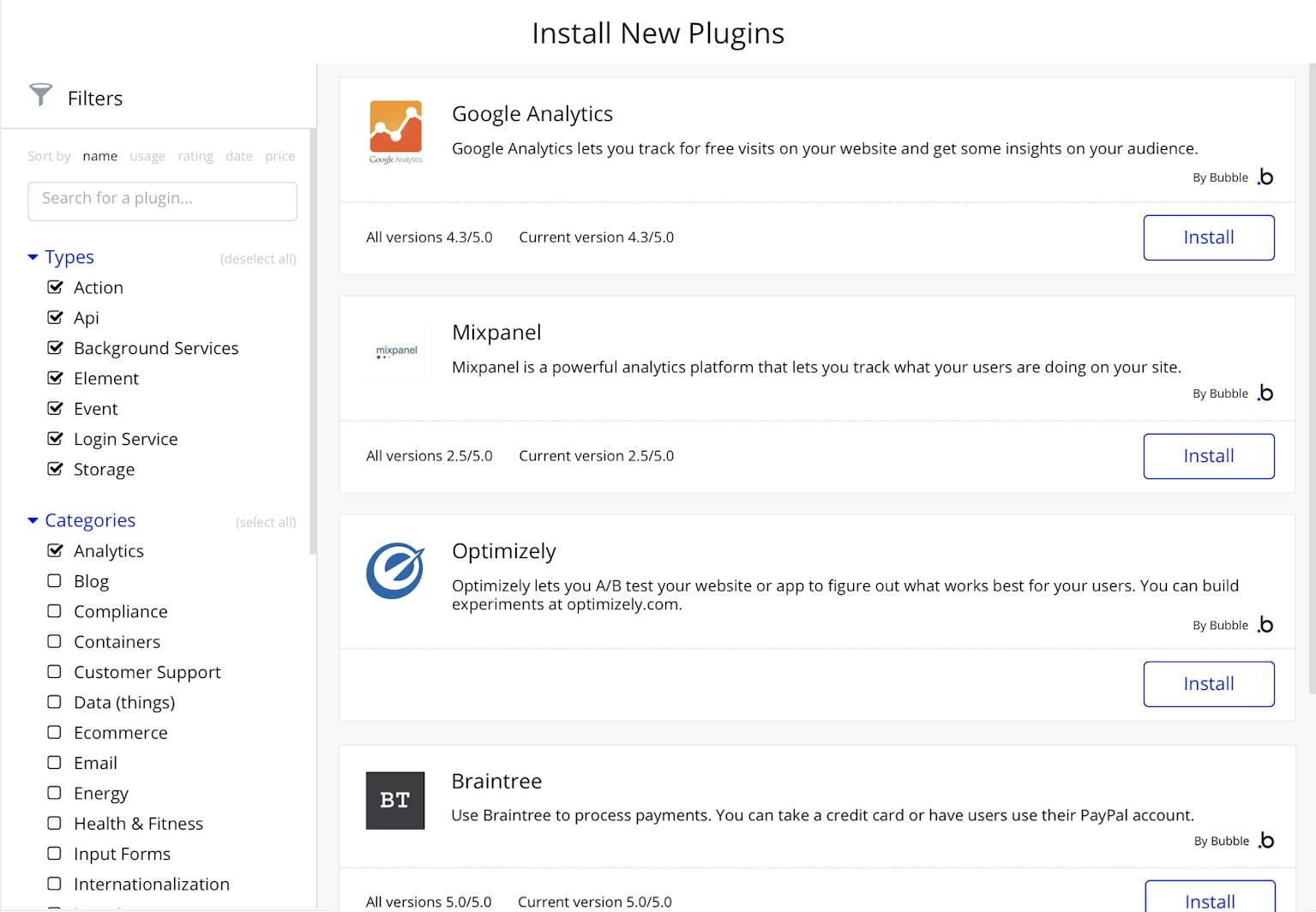
Bubble provides built-in integration with Google Analytics for basic traffic and engagement reporting. Plugins also exist to connect other analytics tools like Mixpanel or Segment.
For custom metrics, Bubble’s database architecture enables tracking events and user behavior within the platform itself. This allows building detailed reports on conversions, referrals, churn, and more.
Users with coding experience can also leverage the API and developer tools to build advanced analytics pipelines. But out-of-the-box reporting requires configuration.
Overall, Bubble provides ample analytics options but requires manual setup versus turnkey solutions.
Strikingly
Strikingly has native integration with Google Analytics for traffic and visitor reporting. The platform itself does not include advanced behavioral tracking.
Users are limited to the metrics Google Analytics provides out-of-the-box. The ability to implement custom tracking or analytics pipelines is constrained by Strikingly’s simple architecture.
For most use cases, Strikingly analytics will cover the basics well. But there is little room for expansion beyond the Google Analytics basics.
Winner: Bubble
For analytics and reporting, Bubble wins based on the greater flexibility its database structure and API provide.
Strikingly still covers core reporting through Google Analytics. But Bubble enables more customization, especially for tracking app/site behavior.
So Bubble is preferable for businesses needing to build custom reports. Strikingly works better for simpler tracking needs.
5. Website Performance
Website Speed and Load Times
Bubble
Bubble sites load quickly since pages are rendered server-side rather than relying on client-side JavaScript. Code is also efficiently minified and bundled.
Load times ultimately depend on hosting setup and media optimization. But the underlying Bubble architecture provides a fast foundation.
For image-heavy sites, lazy loading and delivery from CDNs can optimize performance. Bubble also has file storage limits that may require upgrading for large volumes.
Overall, Bubble enables fast baseline speeds. But performance still requires user optimization based on site complexity.
Strikingly
Strikingly pages load quickly due to optimized templates with minimal scripts and efficient hosting. Site content is also distributed globally on Strikingly’s CDN.
The strict template architecture prevents bloated, inefficient pages. Images and media are automatically compressed and lazy loaded.
However, large media libraries or add-ons like extensive animations can impact load times. Strikingly does not allow overages so sites stay lean.
In general, Strikingly’s simple templated model results in excellent performance without much user effort.
Winner: Tie
Bubble and Strikingly are evenly matched regarding speed and load times. Their underlying technical architectures promote fast baseline performance.
Actual results come down to media optimization, limiting bloat from excessive addons/plugins, and utilizing CDNs effectively. But both platforms provide a solid starting point.
So for speed, Bubble and Strikingly tie. Their core strengths offset any minor differences.
Website Reliability and Uptime
Bubble
Bubble sites benefit from the platform’s global cloud infrastructure and network of data centers. Resources auto-scale to maintain performance even with traffic spikes.
In the event of outages, redundancy prevents full downtime. Bubble also provides status updates and historical uptime metrics for transparency.
Users can further optimize reliability by enabling multiple regions for failover. Premium support plans give access to priority fixes for critical issues.
Overall, Bubble’s cloud-based architecture results in excellent reliability and near 100% uptime.
Strikingly
As a SaaS website builder, Strikingly is powered by cloud servers distributed worldwide for redundancy. Resources dynamically scale to handle the demand.
Strikingly promises over 99.9% uptime but lacks real-time status dashboards of Bubble. Rapid response times prevent prolonged outages.
However, being locked into Strikingly’s stack means less control compared to Bubble’s flexible infrastructure options. Users must depend on Strikingly’s efforts.
In general, Strikingly provides solid reliability but with less visibility and control compared to Bubble.
Winner: Bubble
For website reliability and uptime, Bubble wins based on giving users more control and visibility over infrastructure and performance.
Strikingly still delivers excellent uptime. But Bubble enables optimizing redundancy and issue resolution through various levers like regions, priority support, etc.
So Bubble gets the edge, especially for mission-critical sites. But most users will be happy with Strikingly’s reliability.
6. Customer Support and Community
Bubble
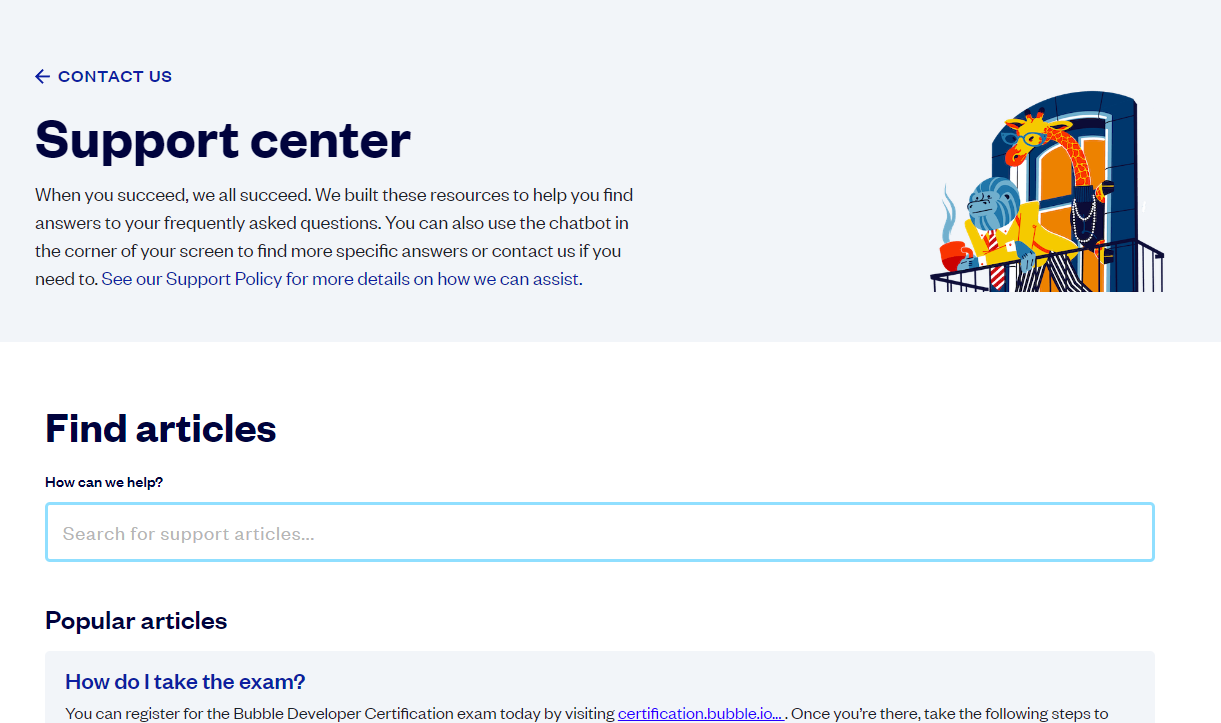
Bubble provides email support for all users. Priority live chat and expedited responses are included in paid plans. Support covers both technical issues and building guidance.
Bubble also has an active community forum for questions and discussion. Users can access documentation, tutorials, and webinars for self-service learning.
For ongoing education, Bubble offers a free community platform with courses, videos, templates, and example projects. The Bubble Facebook group, with over 70K members, is also hugely valuable.
Overall, Bubble provides excellent support and an engaged user community ideal for continued learning.
Strikingly
Strikingly offers email support with reasonably fast response times. Chat is only available for e-commerce-related questions, limiting live assistance.
Self-help resources include documentation, videos, and articles focused on using Strikingly’s template builder. But educational material is nowhere near as extensive as Bubble.
The Strikingly Facebook group provides a community forum, albeit much smaller than Bubble with only 3K members currently.
Strikingly covers support basics but lacks Bubble’s breadth of community-driven learning resources.
Winner: Bubble
For customer support and community, Bubble is the clear winner. The forums, courses, and Facebook group foster an unparalleled knowledge base and user engagement.
Strikingly support meets baseline needs but pales in comparison to the ecosystem Bubble has built. This matters for continued education as users scale their skills.
So Bubble’s community resources provide huge long-term value, especially for ambitious builders.
7. Pricing
Bubble
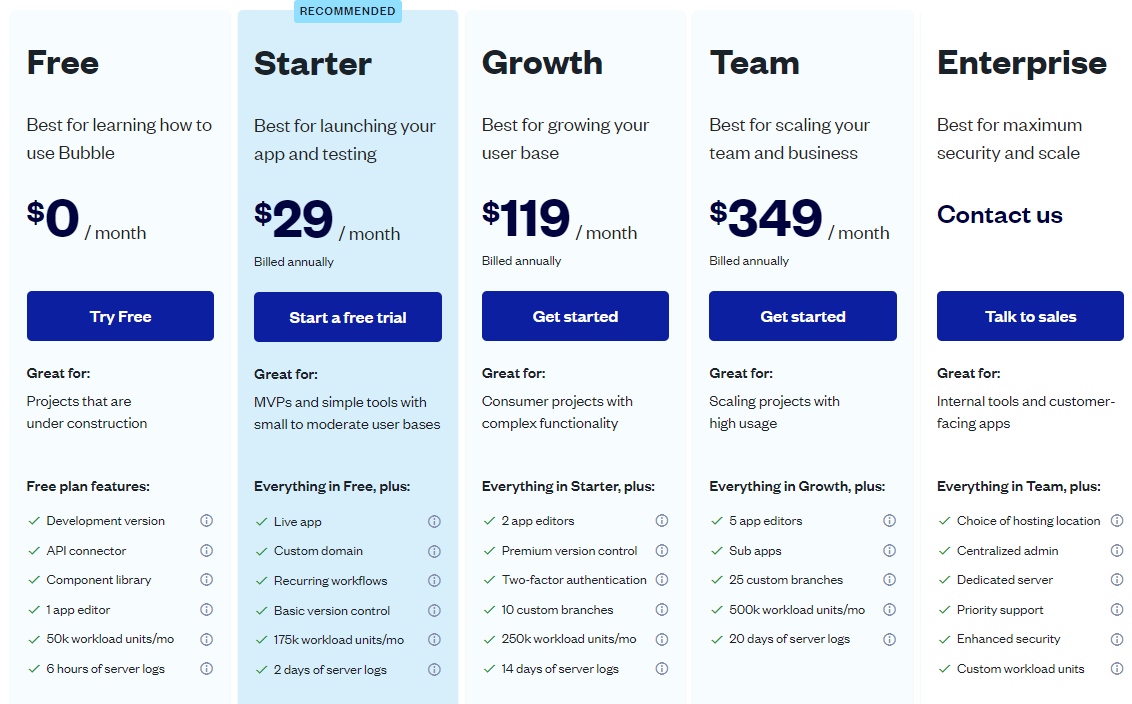
Bubble offers a free plan for core features that is ad-supported. Paid plans start at $29/month for removing ads and additional cloud storage. Higher tiers provide more resources and priority support.
Addons like hosting, domains, and advanced features incur separate fees. So total cost can rise with complex apps and high traffic needs. Active development may require expensive packages.
Bubble also charges revenue sharing on sites earning over $50k. Overall pricing is competitive but can hit enterprise levels at scale.
Strikingly
Strikingly has free and paid plans. The basic free option is ad-supported but usable. Paid plans start at $8/month for removing Strikingly branding.
Higher tiers provide benefits like priority support, faster performance, and abandon cart recovery. But core features remain accessible at low cost.
Addons follow a pay-as-you-go model for things like domains and extra storage. But there are no revenue-sharing cuts like Bubble.
Overall, Strikingly delivers solid value and predictable pricing even as sites grow. Costs scale gradually versus Bubble’s spikes.
Winner: Strikingly
For pricing, Strikingly wins for providing robust features at a freemium level and gradual scaling costs. Bubble’s open-ended pricing creates uncertainty.
Strikingly’s simplicity does constrain advanced capabilities. But predictable pricing makes it friendlier for early-stage businesses with tight budgets.
So Strikingly gets the nod, especially for new entrepreneurs who want straightforward costs.
8. Reviews and Reputation
Bubble

Bubble has an overall positive reputation as a flexible no-code platform. Users praise the visual programming model and expansive capabilities compared to traditional website builders.
However, many reviews note Bubble’s steep learning curve. Creating complex apps requires an investment in mastering database relationships and logic flows.
Bubble is also critiqued for pricing that can jump quickly with upgrades, add-ons, and revenue sharing. Support quality in free plans draws some complaints.
But most reviews focus on Bubble’s empowering benefits for builders. The lack of coding knowledge needed is a highlight.
Strikingly
Strikingly earns strong reviews for its simplicity and ease of use. Users mention how quickly professional-looking sites can be created through the intuitive editor.
However, multiple reviews lament limited customization and rigid templated design. The lack of flexibility beyond Strikingly’s scope draws critiques.
Pricing receives positive marks for providing solid value and features even at low tiers. However, some dislike restricting capabilities to steer users to paid plans.
Altogether, Strikingly’s reviews focus on exceptional usability but desire for more design control.
Winner: Tie
Bubble and Strikingly both have excellent reputations but for different reasons. Bubble wins on flexibility and power while Strikingly gets praise for simplicity and ease of use.
The platforms attract different audiences, so there is no universal winner. Needs and skill levels sway opinion, resulting in a tied verdict.
9. FAQ’s
Bubble FAQs
- What coding skills do I need for Bubble? None! Bubble uses a visual programming interface that lets you build web apps by connecting widgets without needing to code.
- Can I create an online store with Bubble? Yes, Bubble has e-commerce features to build customized online stores. You can add shopping carts, product listings, payment processing, and more.
- Does Bubble have good SEO features? Bubble makes it easy to implement SEO best practices like meta tags, alt text, sitemaps, etc. The flexibility allows deep optimization.
- Is there a Bubble mobile app? Yes, Bubble offers iOS and Android mobile apps so you can build your web apps on the go. Apps sync in real time with the web editor.
Strikingly FAQs
- Does Strikingly have free plans? Yes, Strikingly has a free ad-supported plan with decent capabilities. Paid plans start at $8/month for additional features.
- Can I use custom domain names with Strikingly? Yes, you can connect custom domains to Strikingly sites, including free plans. Domains can be purchased through Strikingly or transferred in.
- Is Strikingly beginner-friendly? Absolutely. Strikingly prioritizes ease of use through its template editor. Even total beginners can create a site in minutes with no learning curve.
- Does Strikingly work for blogging? Strikingly has basic built-in blogging capabilities to quickly add posts. However, it lacks some advanced features of dedicated blogging platforms.
Final Thoughts
Choose Bubble if…
Bubble is the best choice if you want to create responsive websites with maximum flexibility. The expansive features and open-ended design space allow complex apps, advanced functionality, and deep third-party integrations. Bubble empowers ambitious builders who are willing to invest time in learning the platform.
Choose Strikingly if…
Strikingly is ideal for beginners wanting a fast, low-commitment website. The simplified editor and pre-made templates make launching incredibly easy. Strikingly sites meet basic business needs quickly with minimal effort. Just don’t expect too much customization.
Check out my Strikingly review to learn more.
Alternatively, take a look at some of my Strikingly comparisons to see how it fares against other website builders:
- Strikingly vs. Wix
- Strikingly vs. Weebly
- Strikingly vs. Webflow
- Strikingly vs. Squarespace
- Strikingly vs. Aboutme
- Strikingly vs. PageCloud
- Strikingly vs. Instapage
- Strikingly vs. Launchrock
Choosing the right platform is critical for setting your online business up for success. Make sure to consider your specific goals, capabilities, and growth stage. And feel free to ask any questions in the comments if you need help making the decision between Bubble and Strikingly!
